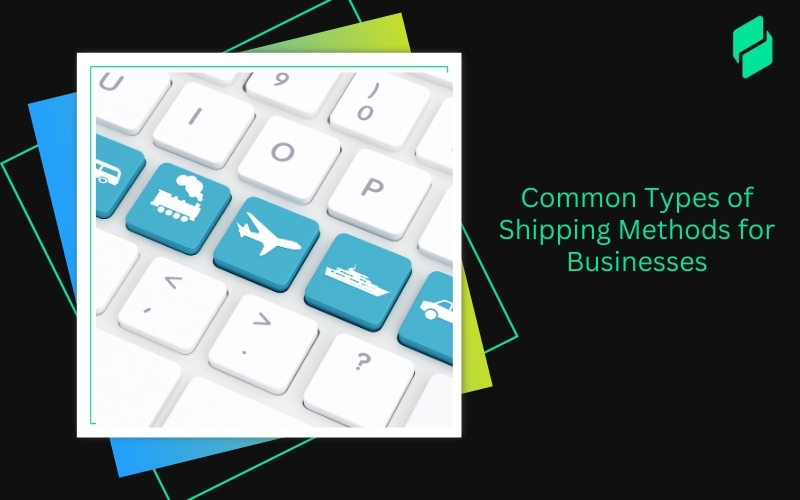Optimize your business: use unlimited savings with Pazago fulfilled now!
Get Started ->Exporting goods from India can feel like a maze of paperwork and regulations. Many small and medium-sized businesses face challenges with the complexity of export documentation, which can delay shipments and affect cash flow. Missteps in handling delivery documents can lead to customs delays, costly fines, or even shipments being returned.
You’re working hard to grow your business, but the maze of documents often makes it harder to succeed in global trade. As an exporter, it’s easy to overlook some critical details when you’re focused on meeting deadlines and finding buyers. Understanding the essential documents you need will make your export process much smoother and more predictable.
In this blog, we’ll explore the must-know delivery documents for exporters, the key steps for handling them properly, and practical tips for reducing errors. By the end, you’ll have a better grasp of how to manage delivery documents with confidence and clarity.
Key Takeaways:
- Delivery documents are essential for smooth export transactions, ensuring compliance and timely shipments.
- Key documents include Bills of Lading, Air Waybills, Delivery Orders, and Proof of Delivery.
- Special scenarios require additional paperwork, like ATA Carnets and Certificates of Origin.
- Consistent and accurate documentation prevents costly errors and delays in the export process.
- Staying organized with your export paperwork is crucial for smoother logistics and successful transactions.
Core Delivery Documents You’ll Use in Exporting
Exporting goods involves handling various documents that ensure the shipment’s smooth movement and compliance. These documents are crucial for customs clearance, payments, and final delivery. Here are the key delivery documents you’ll need to manage:

1. Bill of Lading (B/L)
The Bill of Lading is one of the most crucial documents in international trade. It serves as proof that the goods were received, outlines the terms of transportation, and confirms the transfer of ownership from the seller to the buyer.
Issued By: Shipping lines or freight forwarders.
Validity: The validity of the B/L depends on whether it is negotiable or non-negotiable. Negotiable B/Ls can be transferred to another party, while non-negotiable ones cannot.
Key Components:
- Details of the shipper and consignee
- A description of the goods being transported
- The place of origin and destination
- Terms and conditions of the transport
- Shipping company’s signature
Special Considerations: For shipments involving Letters of Credit (LC), you will need a negotiable B/L. Be sure to confirm whether your buyer requires an original B/L or if a telex release will suffice.
Also Read: Differences Between Original and Express Bill of Lading
2. Air Waybill (AWB)
The Air Waybill is used for air shipments and serves as the contract between the shipper and the airline. It is a non-negotiable document, meaning ownership cannot be transferred through the AWB.
Issued By: The airline or the freight forwarder handling the air shipment.
Validity: The AWB is typically valid for the duration of the shipment process and is used as proof of shipment.
Key Components:
- Shipper and consignee details
- Flight information and date of shipment
- Description of the goods being shipped
- Airway bill number and routing information
Special Considerations: While it does not transfer ownership, it is essential for customs clearance and tracking the cargo. Ensure the AWB matches your shipping details.
Also Read: Difference and Meaning of MAWB and HAWB in Shipping
3. Delivery Order (DO)
The Delivery Order is issued by the carrier or freight forwarder to release the goods to the consignee at the destination port. It grants the consignee the right to collect the cargo.
Issued By: Carrier, shipping company, or freight forwarder.
Validity: The DO is valid as long as the consignee presents it to the port or terminal and clears any outstanding charges or customs obligations.
Key Components:
- Consignee and consignee's contact information
- Details of the shipment (B/L reference)
- Instructions for cargo release
Special Considerations: A Delivery Order is necessary to collect the shipment at the destination. Make sure your consignee is aware of all required procedures for cargo release.
4. Proof of Delivery (POD)
The Proof of Delivery is signed by the consignee upon receipt of the goods, confirming that the goods were delivered as per the agreed terms.
Issued By: Carrier or transport company.
Validity: The POD is valid once signed by the consignee and serves as confirmation that the goods were delivered in good condition.
Key Components:
- Name and signature of the consignee
- Date and time of delivery
- Condition of the goods upon delivery
Special Considerations: The POD is a critical document for confirming the completion of the transaction. It can be used to resolve disputes or claim payment once the goods are delivered.
5. Transport Receipt / Lorry Receipt (LR)
The Transport Receipt or Lorry Receipt is used in domestic shipments, especially for road transport. It acts as evidence of the goods being received by the transport company for delivery.
Issued By: The transport company or logistics service provider.
Validity: The LR is valid for the transport route and is used to track goods during their journey.
Key Components:
- Details of the transport company
- A description of the goods
- Vehicle details and driver information
- Delivery destination
Special Considerations: This document is crucial for domestic shipments and is used to comply with GST requirements and to track goods through the transport process.
6. Packing List
The Packing List provides a detailed breakdown of all items included in the shipment. It is used by customs officers to verify that the goods match the details provided in the invoice and other shipping documents.
Issued By: Exporter or shipper.
Validity: The packing list is valid as long as it is up-to-date with the shipment’s contents and packaging details.
Key Components:
- A list of all items in the shipment
- HS codes for customs classification
- Dimensions, weight, and type of packaging
Special Considerations: Ensure that your packing list matches the commercial invoice, and always have it signed and stamped for authenticity. Customs may require this document to ensure that your goods meet the necessary import/export requirements.
Now that we’ve covered the basics, let’s look at documents required for more specific export situations that could impact your shipment’s success.
Also Read: Important Documents Required for Export
Special Delivery Documents for Specific Export Scenarios
Specific export scenarios require additional documents beyond the basics. These special delivery documents ensure smooth customs clearance and compliance with particular regulations. Below are some key documents for unique export situations:

1. ATA Carnet (Temporary Shipment Certificate)
The ATA Carnet is a customs document used for temporary exports, allowing goods to be shipped without paying import duties and taxes. It is typically used for exhibitions, trade shows, or professional equipment that will be re-imported.
Issued By: The Federation of Indian Chambers of Commerce & Industry (FICCI).
Validity: Valid for up to 12 months from the date of issue. It is essential that the goods are re-imported within this period to avoid penalties.
Key Components:
- Information on the goods being exported temporarily
- Details about the exporter and importer
- Carnet number and validity period
Special Considerations: The ATA Carnet is not applicable for consumables or items that will be sold abroad. It is critical to ensure that goods are returned within the allowed timeframe to avoid paying import duties.
2. Customs Power of Attorney (POA)
The Customs Power of Attorney (POA) authorizes a customs broker or clearing agent to act on behalf of the exporter to handle customs formalities. It is essential for ensuring that your goods clear customs smoothly and that all export duties are paid on time.
Issued By: The exporter or company to the appointed customs house agent (CHA).
Validity: The POA is valid as long as it is current. If it is for a specific shipment, the validity ends once that shipment is cleared.
Key Components:
- Exporter’s name and contact details
- Customs broker or CHA’s details
- Specific powers granted to the authorized person (e.g., filing shipping bills, clearing goods)
Special Considerations: A POA must be signed by the company’s authorized signatory and needs to be renewed annually if used regularly. Keeping scanned copies is crucial for future audits or compliance checks.
3. Certificate of Origin (COO)
The Certificate of Origin (COO) certifies that the goods being shipped are manufactured in the exporter’s country. It is required by customs to determine applicable tariffs and to claim any preferential treatment under trade agreements.
Issued By: Issued by Export Promotion Councils (EPCs) or authorized chambers of commerce.
Validity: Valid for the duration of the shipment. It is essential for customs clearance in the destination country, and ensures that the proper duties are applied based on the country of origin.
Key Components:
- Details of the exporter and consignee
- Description of the goods and their country of origin
- Signature and stamp from the issuing chamber or authority
Special Considerations: Be sure to apply for a COO ahead of time to avoid delays. For certain goods, the COO may need to be attested by the consulate or embassy of the destination country.
4. Export License
An Export License is required for specific goods that are subject to export controls or restrictions, such as military items, sensitive technology, or products with national security implications. It authorizes the exporter to ship the goods internationally.
Issued By: The Directorate General of Foreign Trade (DGFT), under the Ministry of Commerce and Industry, Government of India.
Validity: The validity of an export license depends on the nature of the product and the terms set by the issuing authority. Some licenses may be valid for a fixed period, while others are subject to specific export quotas.
Key Components:
- Product description and HS code
- Exporter’s and consignee’s information
- Specific terms and conditions for export
Special Considerations: Exporters must ensure that they apply for an export license well in advance to avoid shipment delays. Some products may require specific approvals or documentation to accompany the license.
Also Read: Applying for Import and Export License in India
5. Inspection Certificate
The Inspection Certificate is used to verify that the goods meet the required quality standards before they are shipped. It is typically requested by the importer or as per the importing country’s regulations.
Issued By: Authorized inspection agencies or third-party inspectors.
Validity: The inspection certificate is valid as long as it accurately reflects the condition of the goods at the time of inspection. It is often required for specific types of goods like food, pharmaceuticals, or electronics.
Key Components:
- Details of the inspection agency
- Description of the goods and the inspection findings
- Date of inspection and signatures of the authorized inspector
Special Considerations: Ensure that the inspection certificate matches the quality standards of the destination country. For certain items, such as food or chemicals, specific regulatory bodies may need to inspect the goods before shipment.
Also Read: Pre-Shipment Inspection Certificate: Purpose and Key Objectives
To make sure you're on track, a detailed checklist can help you confirm that everything is in place before shipping your goods.
Exporter’s Checklist for Delivery Documents
Managing export documents can be complex, but following a simple checklist can keep you organized and on track. By taking the time to double-check all the necessary details, you will reduce the risk of delays and issues. A well-prepared exporter ensures smoother shipments, faster payments, and fewer mistakes.

Here’s a checklist to help you keep track of the essential steps when handling your delivery documents.
- Double-Check Document Consistency: Ensure that the details on all your documents, including the packing list, commercial invoice, and Bill of Lading, are consistent.
- Verify Consignee’s Details and Shipping Terms: Confirm your consignee’s contact details, and ensure the correct Incoterms are agreed upon to avoid delivery misunderstandings.
- Ensure Proper Documentation for Temporary Exports: If you’re shipping goods temporarily (e.g., exhibitions, trade shows), confirm you have the correct ATA Carnet.
- Authorize Only Certified Customs Agents: Issue Power of Attorney (POA) to licensed customs house agents (CHAs) for smooth customs clearance.
- Maintain Document Copies for Audit: Keep both hard and digital copies of all critical export documents for compliance and audit purposes.
- Ensure Goods Meet Destination Country’s Standards: Review any quality certifications or inspection documents required by the importing country to meet their regulations.
- Confirm Payment Terms and Document Requirements: If using a Letter of Credit (LC), verify that all necessary documents for payment are prepared as per LC terms.
- Track Shipments and Update Stakeholders Regularly: Stay informed about shipment progress and communicate status updates with your team and the consignee.
Once you have a clear checklist for managing delivery documents, it’s time to think about the tools that can support you. Keeping track of every document can be a challenge, but the right platform can bring order and clarity to your process, allowing you to stay on top of everything with ease.
Pazago: Simplifying Your Export & Documentation
Pazago is designed to help exporters manage delivery documents and logistics in an organized, efficient way. It offers a comprehensive platform that centralizes critical export documentation, making it easier to track shipments, communicate with stakeholders, and ensure timely and accurate deliveries.
Here are the key features of Pazago that directly align with managing and handling export delivery documents:
- Centralized Document Handling: Store all export documents like Bills of Lading and packing lists in one place for easy access.
- Real-Time Shipment Tracking: Stay updated on your shipments in real time and quickly spot any issues with full visibility of your cargo.
- Efficient Communication: Keep all stakeholders informed and coordinated with Pazago’s integrated messaging system.
- Inspection and Quality Control: Connect with inspectors to ensure your goods meet required standards before shipment.
- Simplified International Payments: Collect international payments easily with priority clearance and competitive Forex rates.
With these features, Pazago simplifies your export documentation, reducing errors and improving efficiency, ensuring your deliveries are completed smoothly.
Conclusion
Handling export documentation properly is critical to ensuring smooth operations and successful transactions. By getting a clear understanding of the essential and specific delivery documents, you can avoid delays and cut down on costly errors. Staying organized and aware of all necessary documentation requirements allows you to handle exports confidently.
If you're looking to make your export process easier, consider exploring tools that can help you manage logistics, documentation, and payments more effectively.
Book a demo today to see how our platform can simplify your export operations and improve your overall efficiency.
FAQs
1. What is the difference between a Bill of Lading and an Air Waybill?
The main difference lies in the mode of transport. A Bill of Lading (B/L) is used for sea shipments, while an Air Waybill (AWB) is used for air freight. The B/L is negotiable, meaning ownership of the goods can be transferred, whereas the AWB is non-negotiable and does not allow for the transfer of ownership.
2. Why is a Proof of Delivery (POD) important in export transactions?
The Proof of Delivery (POD) confirms that the consignee has received the goods as per the agreed terms. It serves as the final confirmation for the completion of the transaction and is essential for resolving any disputes or releasing payment after the goods have been delivered.
3. What role does the Certificate of Origin play in exports?
A Certificate of Origin certifies where the goods were manufactured and is crucial for determining the appropriate tariffs during customs clearance. It may also be needed to take advantage of preferential duty rates under trade agreements between countries.
4. When is a Delivery Order (DO) required in the export process?
A Delivery Order is necessary for releasing the goods at the destination port. It is issued by the shipping company or freight forwarder to authorize the consignee to collect the shipment once it has reached its destination.
5. Do I need an Export License for all types of goods?
Not all goods require an Export License. It is only mandatory for certain controlled or restricted goods, such as those with national security or sensitive technology implications. Be sure to check the specific regulations for your product category to determine if an export license is needed.


.png)








